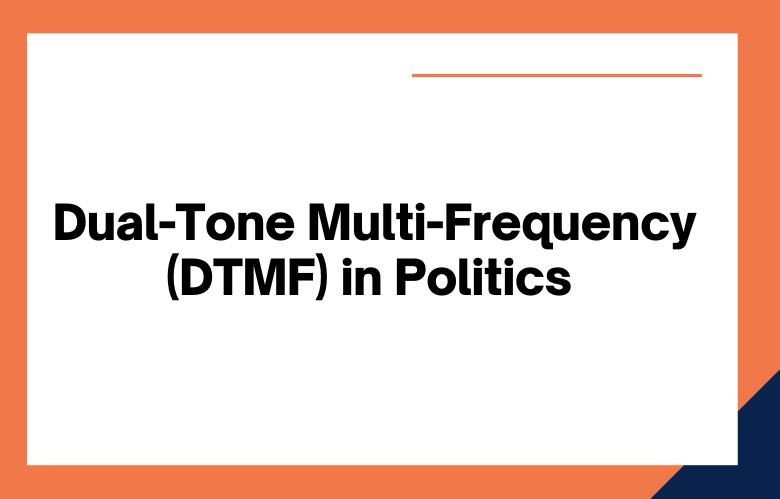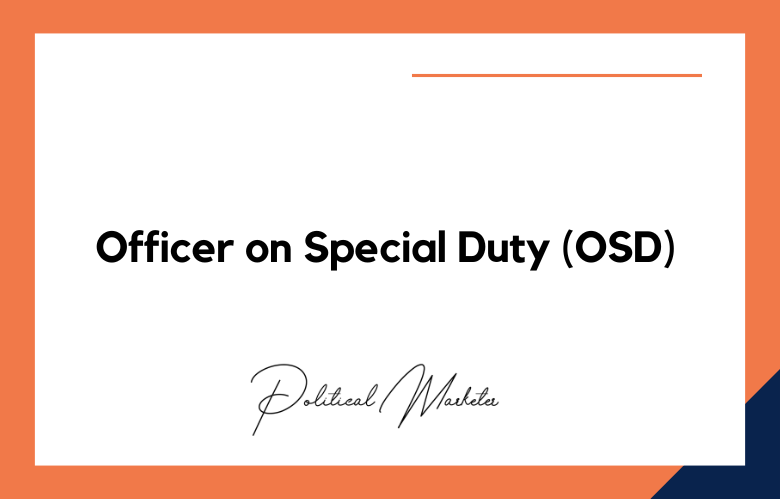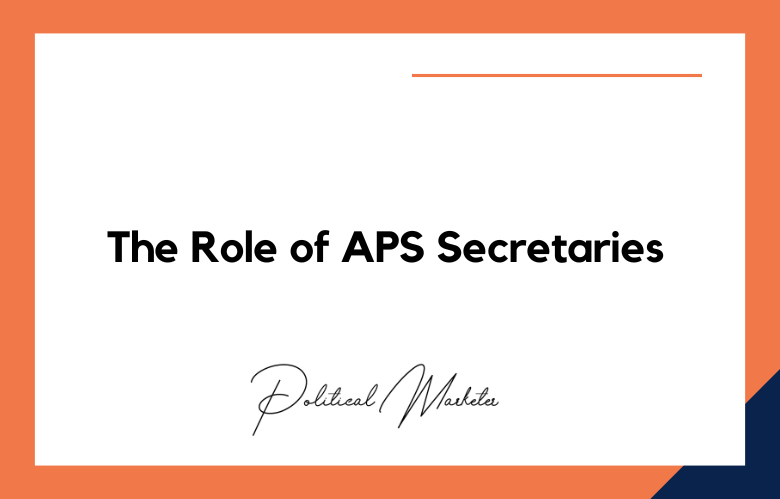When it comes to running a successful political campaign, every detail counts. That is why more and more campaigns are turning to dual-tone multi-frequency (DTMF) technology to reach voters.
DTMF is the same technology used in touchtone phones, and it can provide an interactive experience for a potential voter.
Let’s look at how DTMF works and how it can help your political campaign.
How does Dual-Tone Multi-Frequency (DTMF) work?
Dual tone multi-frequency (DTMF) technology works by using two frequencies—low and high—to generate signals that are recognized by the phone line or other communication device.
Each button on a telephone keypad corresponds to a specific frequency combination, which allows users to input information without speaking. This technology has been around since the 1960s.
Still, it has only recently been adapted for political campaigns, allowing campaigns to reach out more efficiently to voters.
It was first developed in the 1960s by AT&T Bell Laboratories and has since become an industry standard for telecommunication systems.
Generally speaking, when users input their phone number into a website or app, their call is routed through a system that recognizes their number and sends out an automated call using DTMF tones to connect them with the desired person or organization.
Why use Dual-Tone Multi-Frequency (DTMF)?
One of the most attractive aspects of DTMF for political campaigns is its ability to automate calls to large numbers of people at once.
Rather than having staff members manually dial each individual’s phone number, they can input those numbers into an automated system that will make all the calls simultaneously—saving time and money while reaching more people than ever before.
This technology can create interactive surveys that ask users questions about their opinions on various issues or candidates, allowing campaigns to understand their target demographic better and tailor their efforts accordingly.
DTMF ensures that all calls go through without interruptions due to poor cellular reception or dropped calls; since it operates on dedicated networks separate from cellular networks, it provides reliable connections regardless of where you are calling from.
How can DTMF help Political Campaigns reach more Voters?
With election season in full swing, political campaigns seek new ways to reach potential voters. One increasingly popular method is Voice with Dual Tone Multi-Frequency (DTMF) technology.
This technology allows drivers to connect instantly with constituents and disseminate important information quickly and efficiently. Let’s look at how this technology works and why it can benefit political campaigns.
How can dual-tone multi-frequency (DTMF) be used effectively?
For political campaigns to use DTMF effectively, several steps must be taken beforehand. Firstly, campaigns need access to a reliable automated calling service provider with experience setting up this type of system for political purposes.
Once the service provider has been chosen, campaign teams should create scripts for their automated messages and ensure they sound professional yet engaging enough for potential voters.
Lastly, teams need a comprehensive database containing contact information such as phone numbers and email addresses to target specific demographics with their messaging efforts accordingly.
Advantages of Using DTMF for Political Campaigns?
Using DTMF for your political campaign offers several advantages over traditional outreach methods such as door-to-door canvassing or cold calling.
For starters, DTMF can provide an interactive experience for potential voters; you can ask questions about their voting preferences and get instant feedback that you wouldn’t get from other outreach methods.
DTMF allows you to track voter responses, allowing you to better target your message and tailor your outreach efforts accordingly.
Using DTMF is cost-effective; it saves time and money compared to traditional voter outreach methods.
What are the benefits of using DTMF for political campaigns?
Using DTMF technology for political campaigns provides several benefits. Firstly, it makes it easier and faster for campaigns to reach large numbers of people in a short amount of time.
Automated messages can be sent out quickly and cheaply compared to other methods like mail or phone calls, allowing campaigns to stay on top of the latest news and trends without breaking the bank.
DTMF will also enable campaigns to gather valuable data about their target demographics to tailor their messaging accordingly.
More Effective Communication
Dual-tone multi-frequency (DTMF) is a more effective way of communication for political campaigns as it allows the drive to target a specific audience with laser precision.
The ability to specifically target potential voters with DTMF ensures that the campaign’s message is being received by those most likely to be receptive to it.
Greater Reach
Another advantage of using DTMF for political campaigns is that it allows for greater reach.
DTMF allows campaigns to target landlines, mobile phones, and even VoIP numbers.
This means that no matter where potential voters are located, the campaign can reach them with its message.
More Efficient Use of Resources
Another benefit of using DTMF for political campaigns is its more efficient use of resources.
DTMF allows campaigns to make fewer calls while still reaching many people.
DTMF is less intrusive than other methods of communication, such as door-to-door canvassing, meaning that potential voters are more likely to listen to the message when they receive it.
Increased Voter Turnout
One of the ultimate goals of any political campaign is to increase voter turnout.
Studies have shown that targeted communication, such as DTMF, is one of the most effective ways to increase voter turnout.
Campaigns can significantly increase voter turnout on Election Day by targeting potential voters and providing them with information about the election.
Greater Engagement with Voters
Another benefit of using DTMF for political campaigns is that it allows for greater engagement with voters.
When potential voters receive a campaign call, they are more likely to listen to the message and even respond to questions than receive information through mailers or television ads.
This increased engagement can lead to more incredible support for the campaign and its candidate on Election Day.
Conclusion
Voice With Dual-tone multi-frequency (DTMF) technology has revolutionized how political campaigns reach potential voters.
By providing an interactive experience through two-way conversations and tracking voter responses, campaigns can better target their messages and save time and money.
If you’re looking for an efficient way to reach potential voters, consider incorporating DTMF into your political campaign strategy today!
Call: +91 9848321284
Email: [email protected]
Dual-Tone Multi-Frequency (DTMF) for Political Campaigns: FAQs
What is DTMF in the context of political campaigns?
DTMF stands for Dual Tone Multi-Frequency, a signaling method used in touch-tone telephony. In campaigns, it’s used for interactive voice response (IVR) systems where voters press keys to navigate or respond.
How does DTMF work in political phone calls?
Each key press generates a distinct tone. When a voter presses a button during a robocall or IVR session, the system detects the input and triggers a pre-programmed action, such as routing the call or collecting a response.
Why is DTMF important in voter outreach?
It enables campaigns to engage thousands of voters simultaneously in a structured, trackable, and automated way, improving efficiency and data collection.
What are common uses of DTMF in campaigns?
Uses include live call transfers to volunteer agents, polling (e.g., “Press 1 if you support X”), event RSVPs, survey participation, language selection, or opting out.
How is DTMF used in IVR systems?
Voters hear a voice prompt (“Press 1 for English, 2 for Hindi”) and press a key to interact with the system, which routes or responds accordingly.
Can DTMF improve voter engagement?
Yes. It offers an easy, low-tech way for voters to interact instantly with campaign messaging, ask for a callback, or take a poll.
Is DTMF effective for political surveys?
Very. DTMF allows for quick multiple-choice responses in phone surveys, making it easier to collect large-scale voter sentiment data without manual input.
What’s the difference between DTMF and voice recognition in IVR?
DTMF uses keypad input. Voice IVR uses speech detection. DTMF is simpler and more reliable for multilingual or noisy environments.
How do campaigns set up DTMF-enabled IVR systems?
They use telecom platforms or campaign tech providers that support IVR scripting, call automation, and real-time input logging from DTMF tones.
Can DTMF help with volunteer recruitment?
Yes. Voters can press a key to express interest, which triggers a follow-up or transfers them directly to a volunteer coordinator.
Is DTMF compatible with mobile phones?
Yes. It works with any mobile or landline phone using a standard touch-tone keypad, making it widely accessible.
What kind of data does DTMF capture?
It captures keypress responses, timestamps, caller ID, and completion rates—useful for segmentation and follow-up targeting.
Are there legal considerations when using DTMF in campaigns?
Yes. Calls must comply with telecom and election laws, including consent, opt-out options, and data privacy regulations.
How is DTMF used for multilingual support?
Campaigns offer prompts like “Press 1 for English, 2 for Spanish,” letting voters choose their language and receive tailored messages.
Can DTMF be used for donations?
Yes. DTMF can initiate a call transfer to a donation line or send a follow-up link via SMS for secure processing.
How secure is DTMF in campaign interactions?
While DTMF is functional, it’s not encrypted. Sensitive transactions (like payments) should always redirect to secure platforms.
What are best practices for designing DTMF flows?
Keep prompts short, limit menu options, confirm inputs, and offer an option to speak to a live agent when needed.
Can DTMF analytics improve campaign strategy?
Yes. Analyzing responses and patterns helps refine messaging, identify voter preferences, and optimize outreach timing.
How does DTMF integrate with other campaign tools?
It integrates with CRM systems, SMS platforms, and voter databases for seamless data sync and targeting.
What are the limitations of DTMF in campaigns?
It offers limited input types (only keypresses) and may be confusing for users unfamiliar with IVR systems if not designed clearly.











